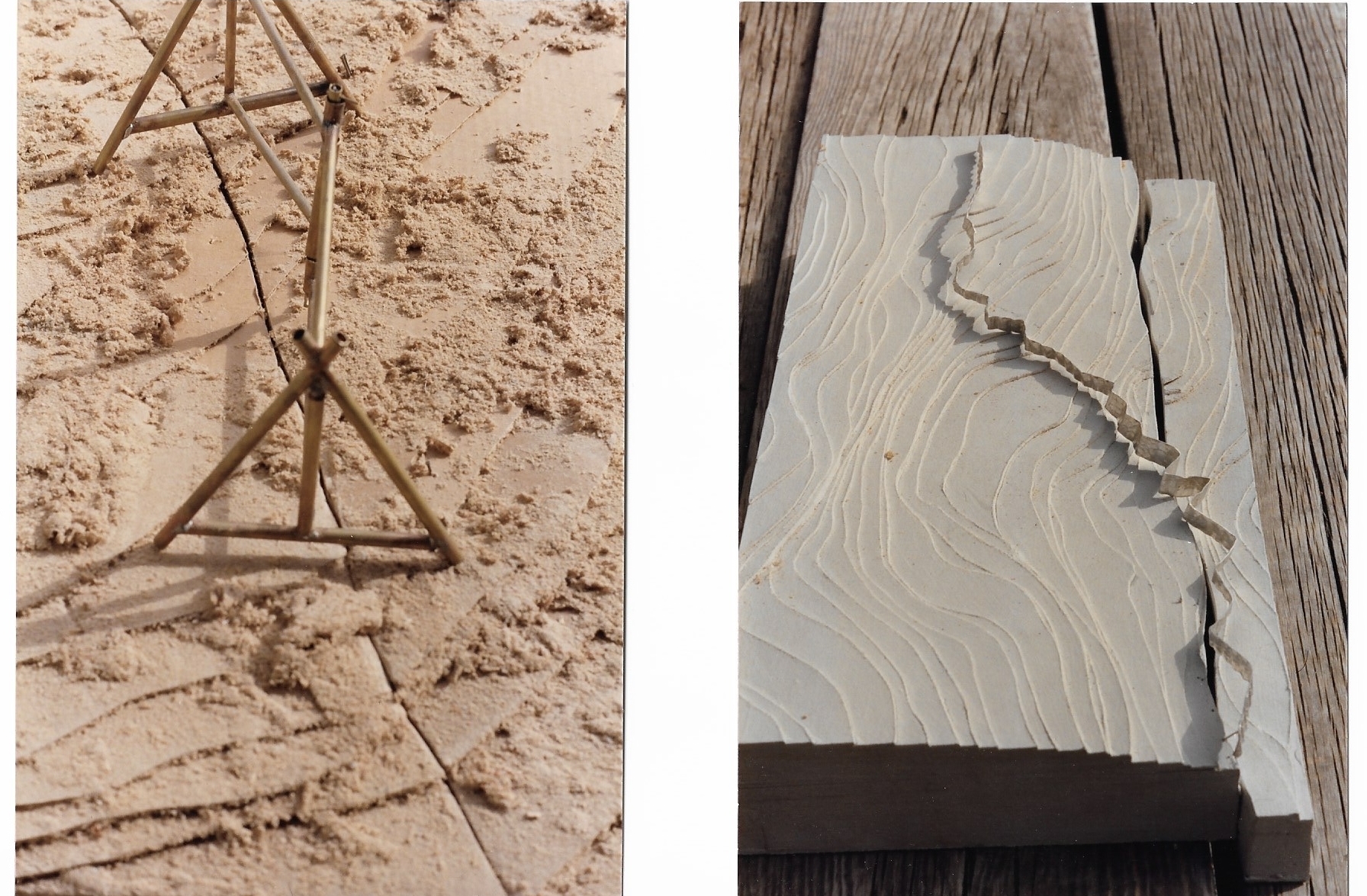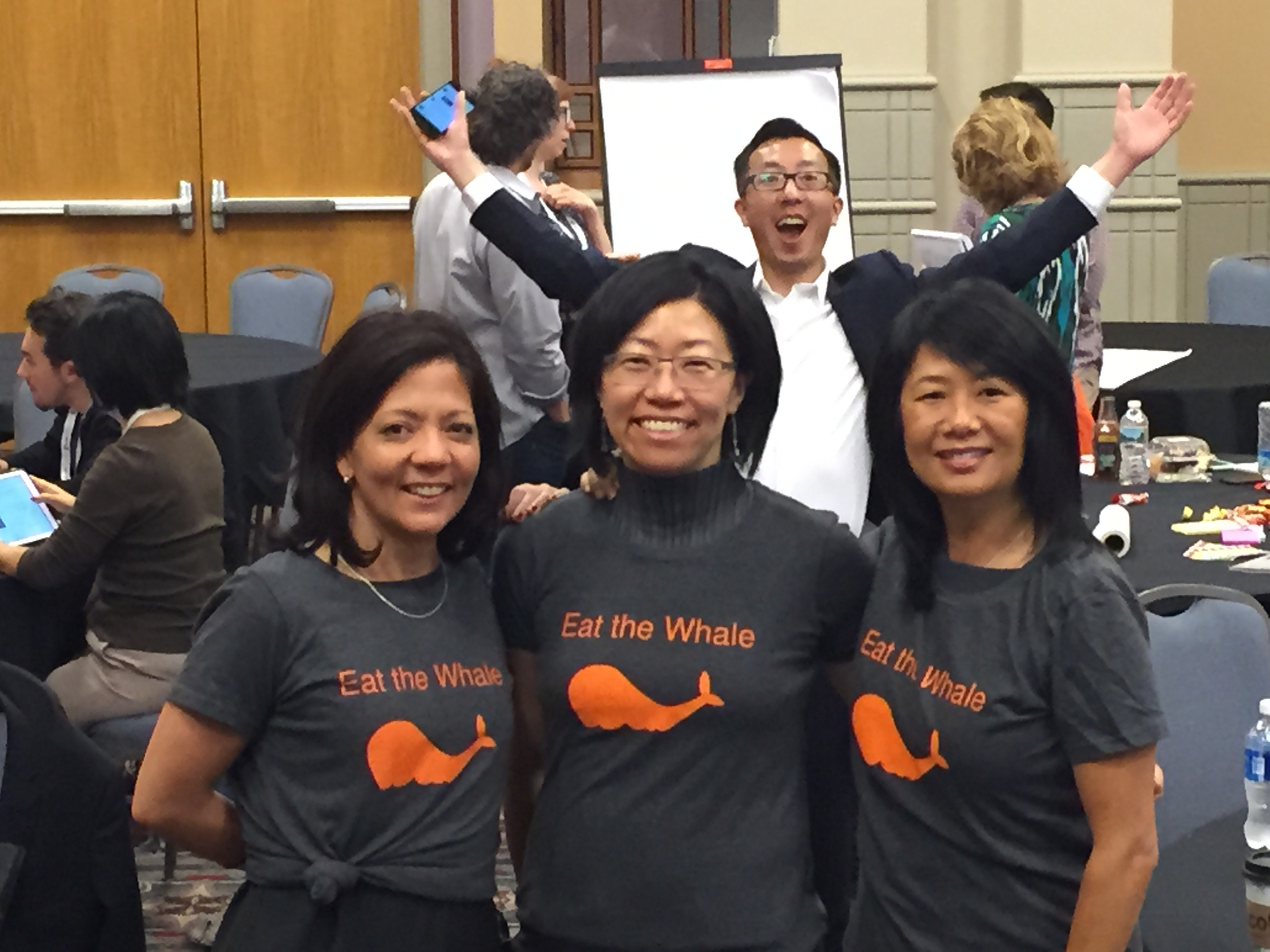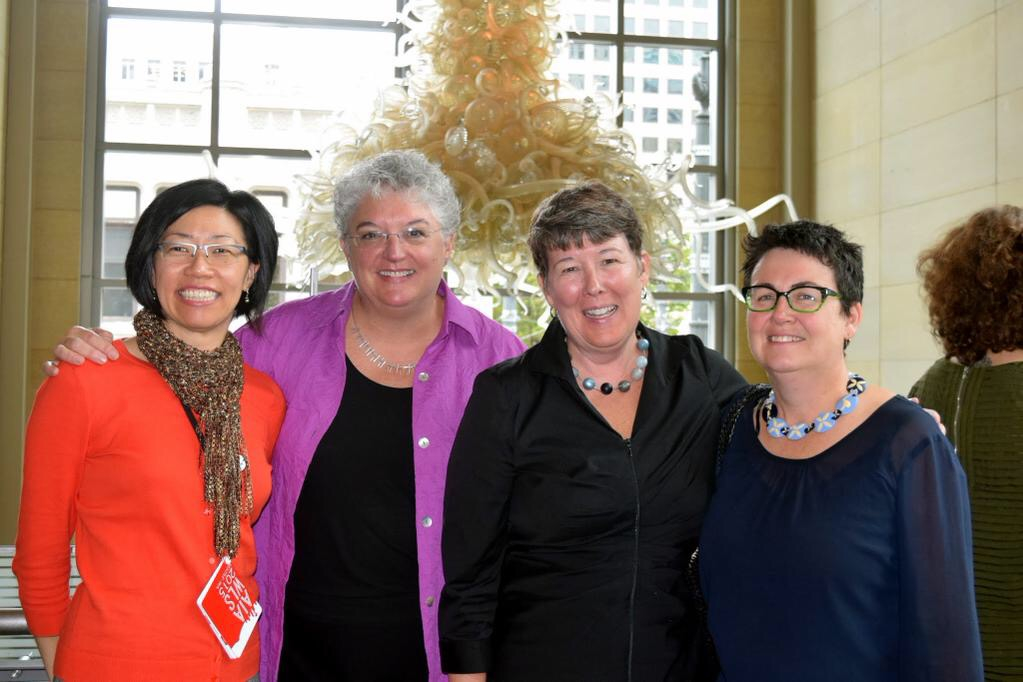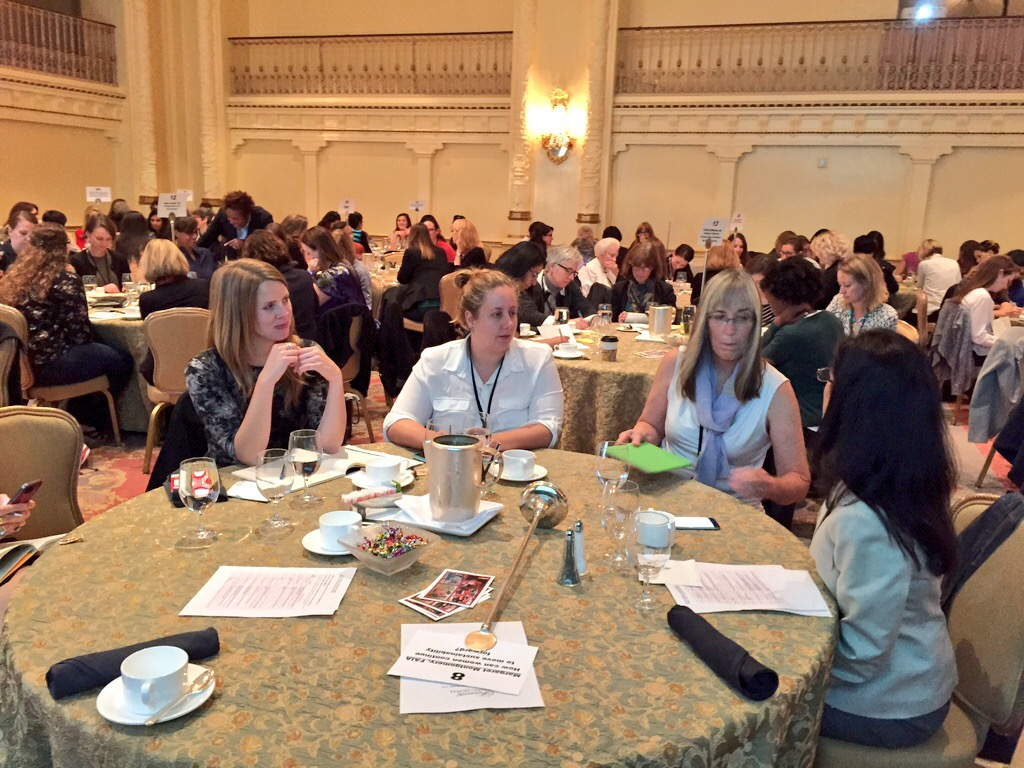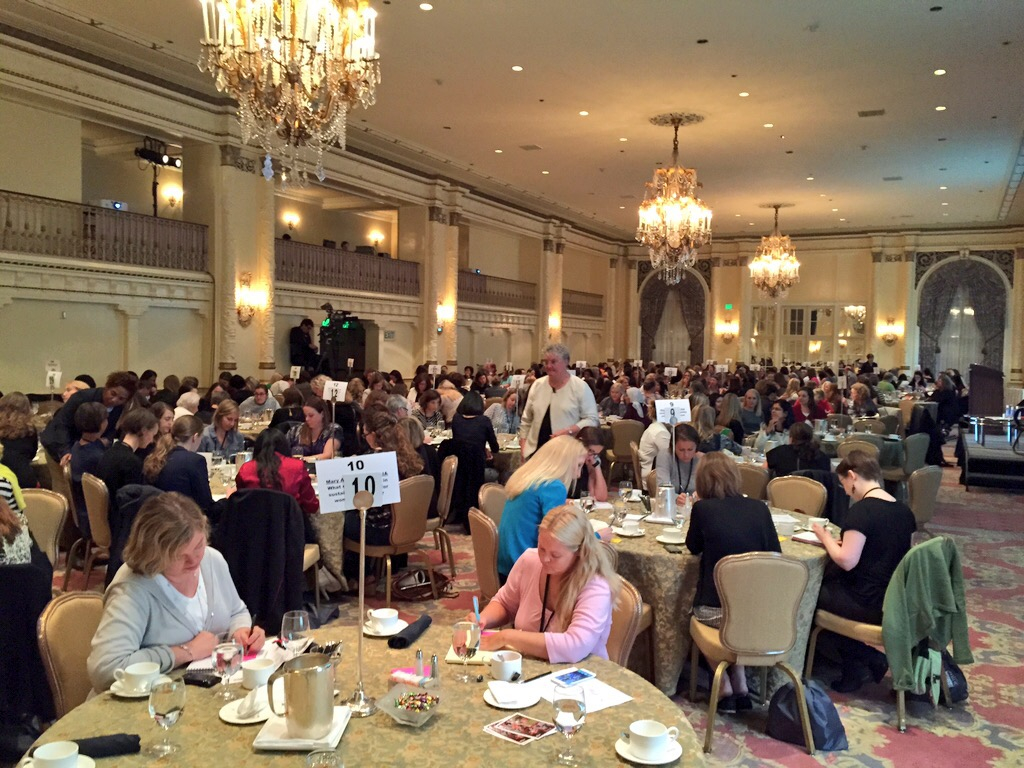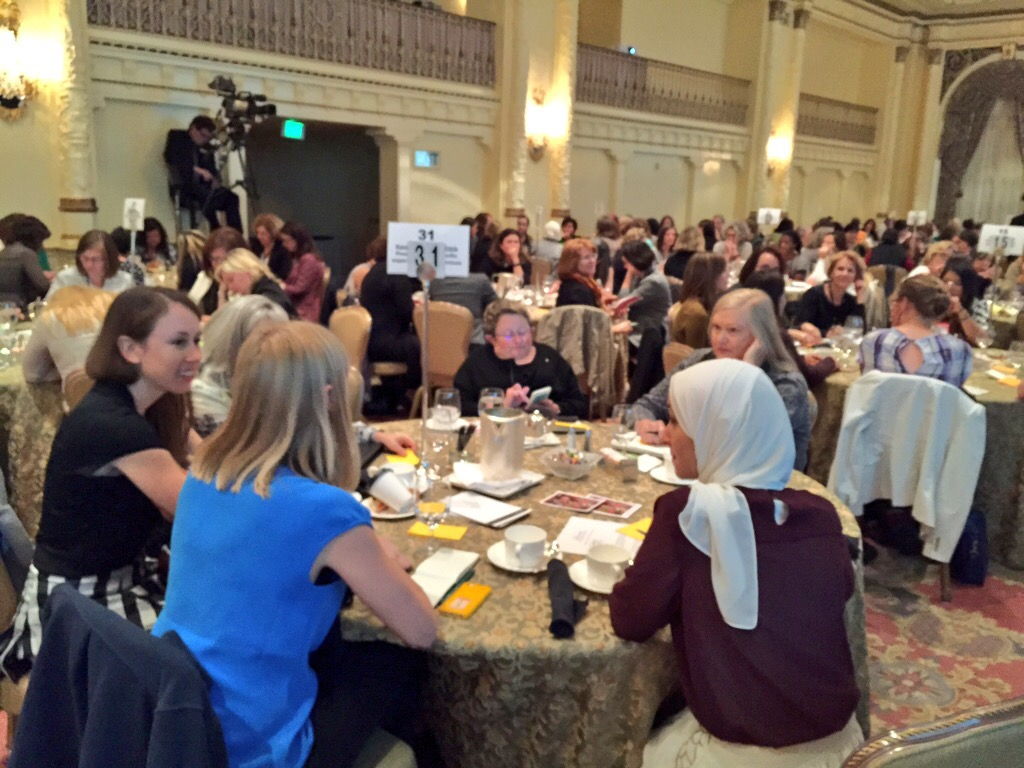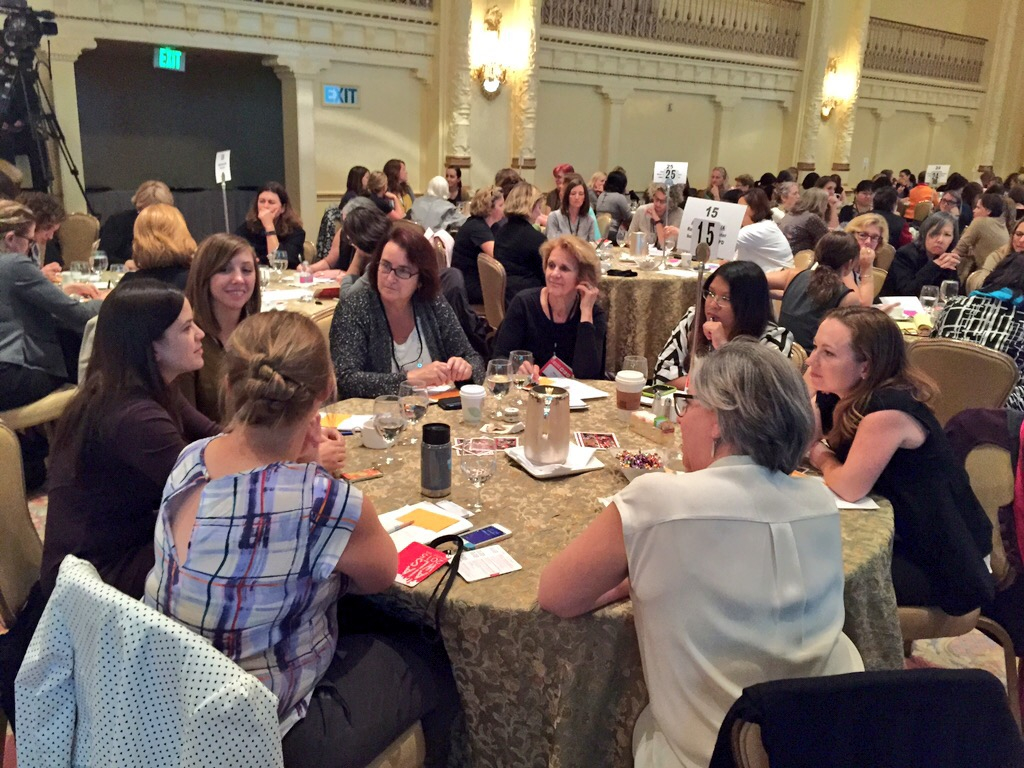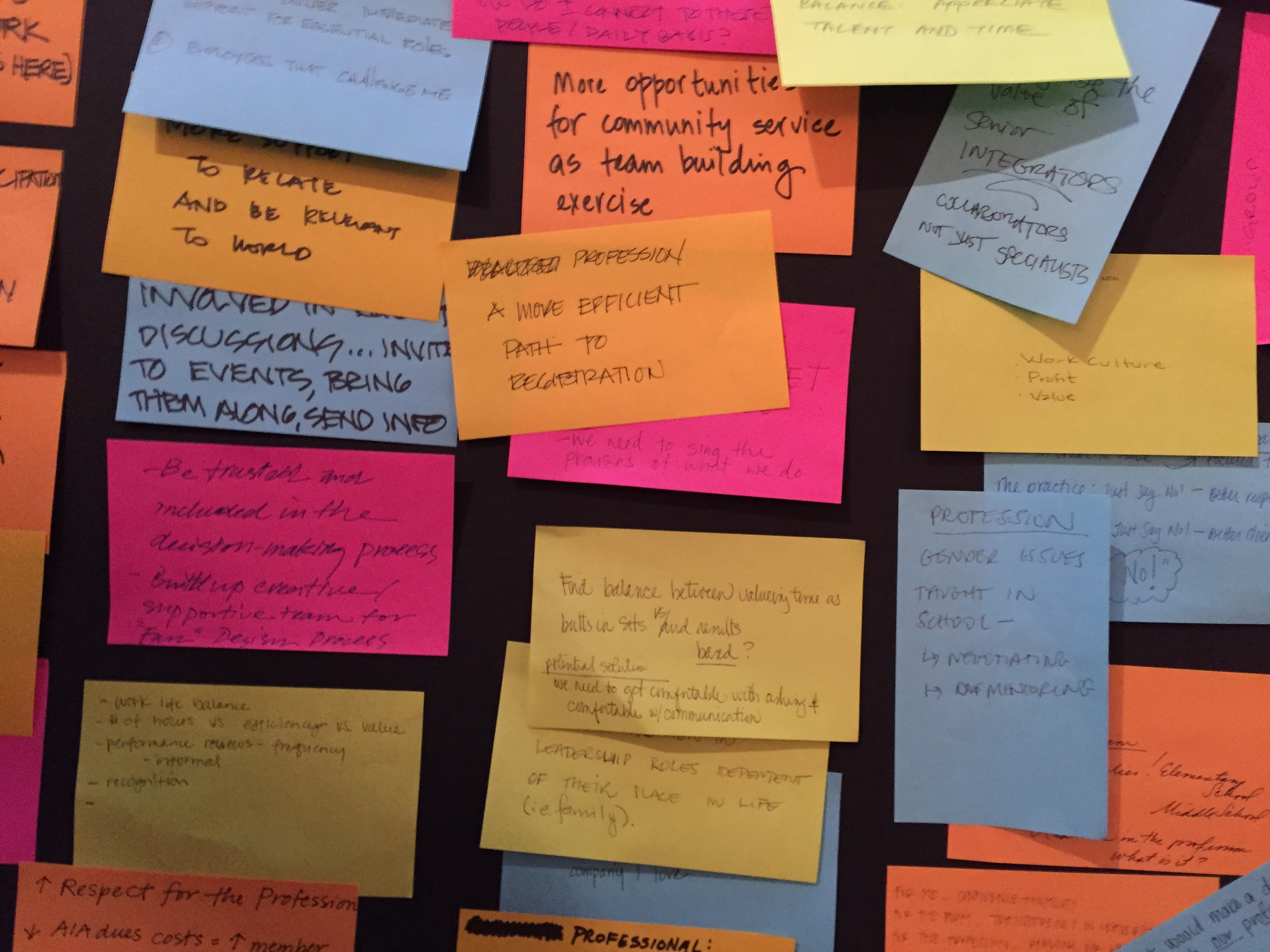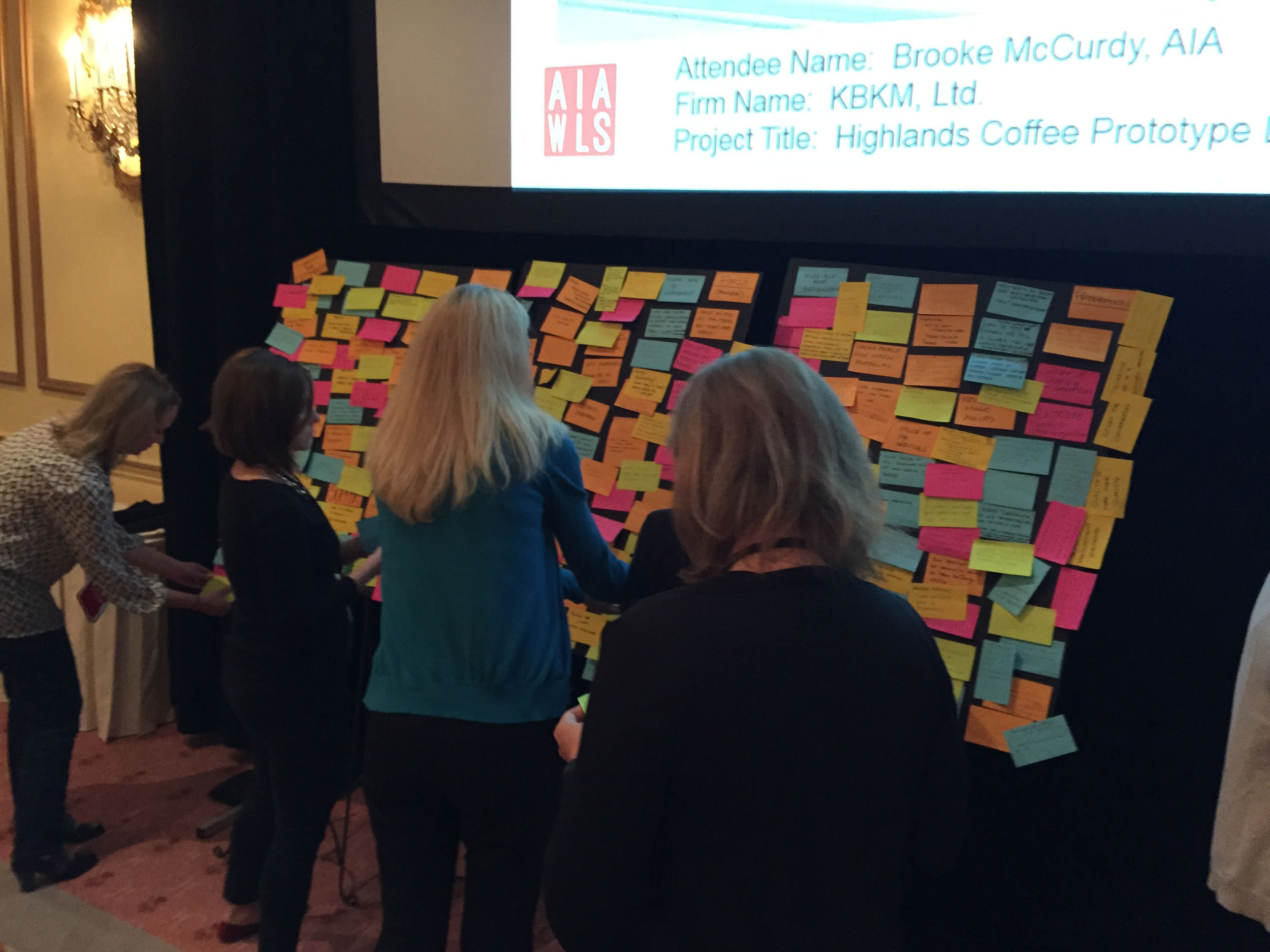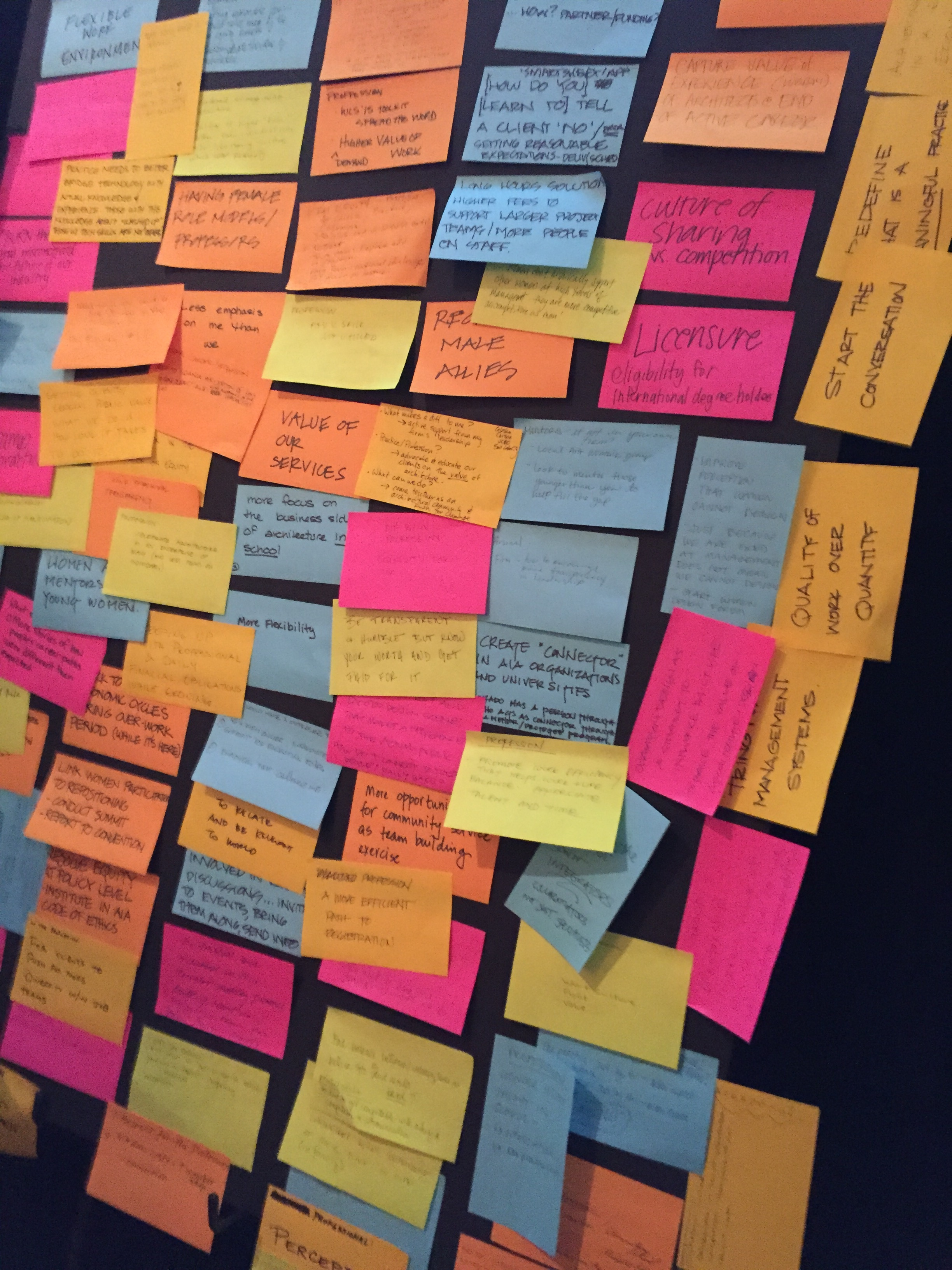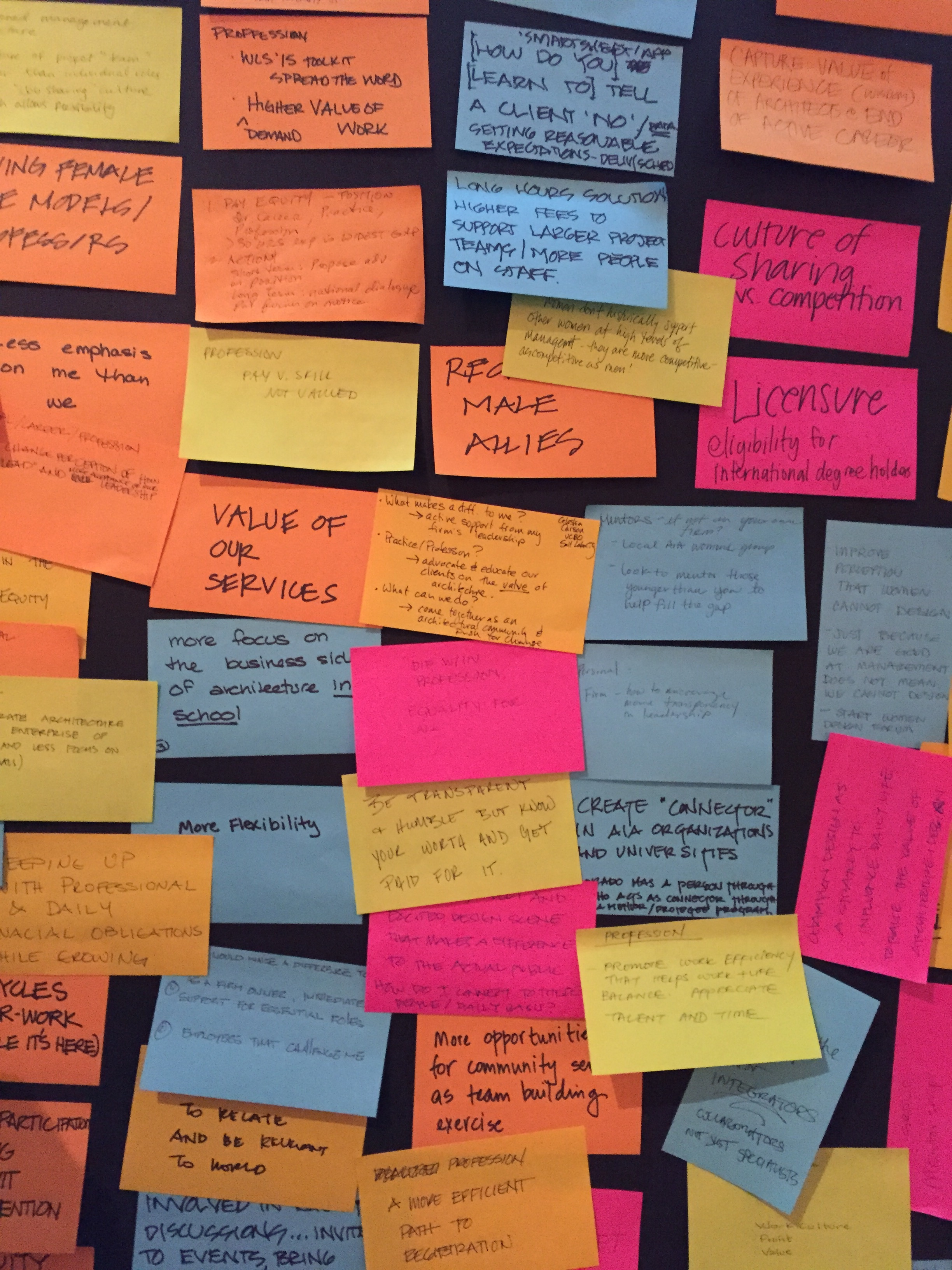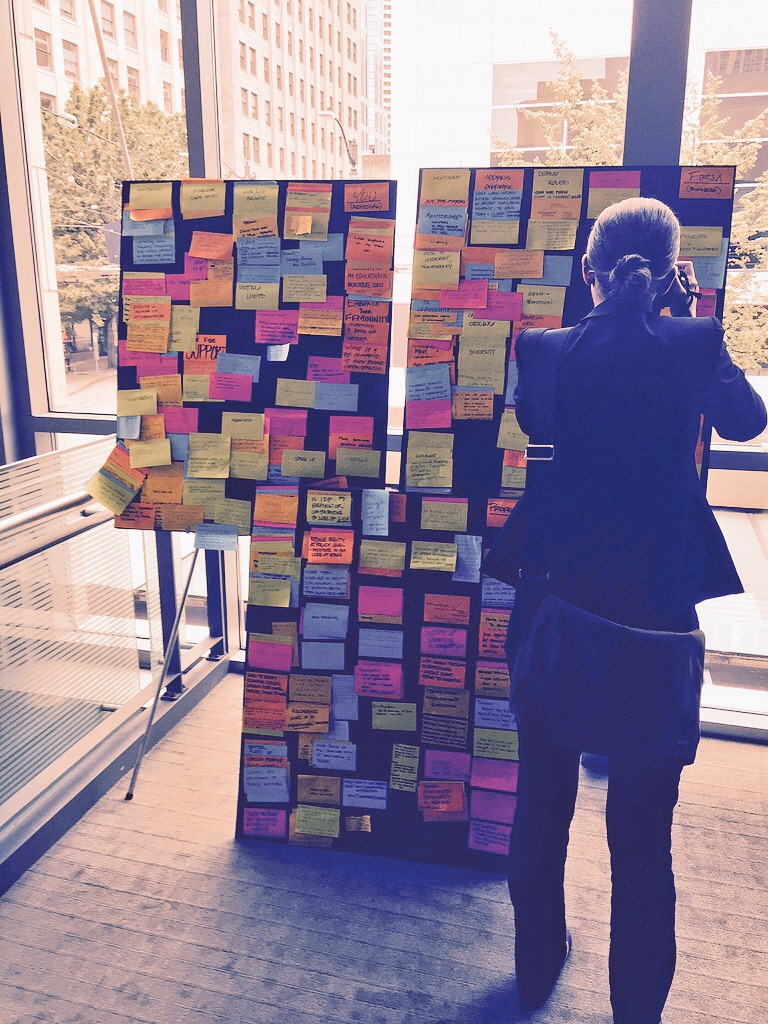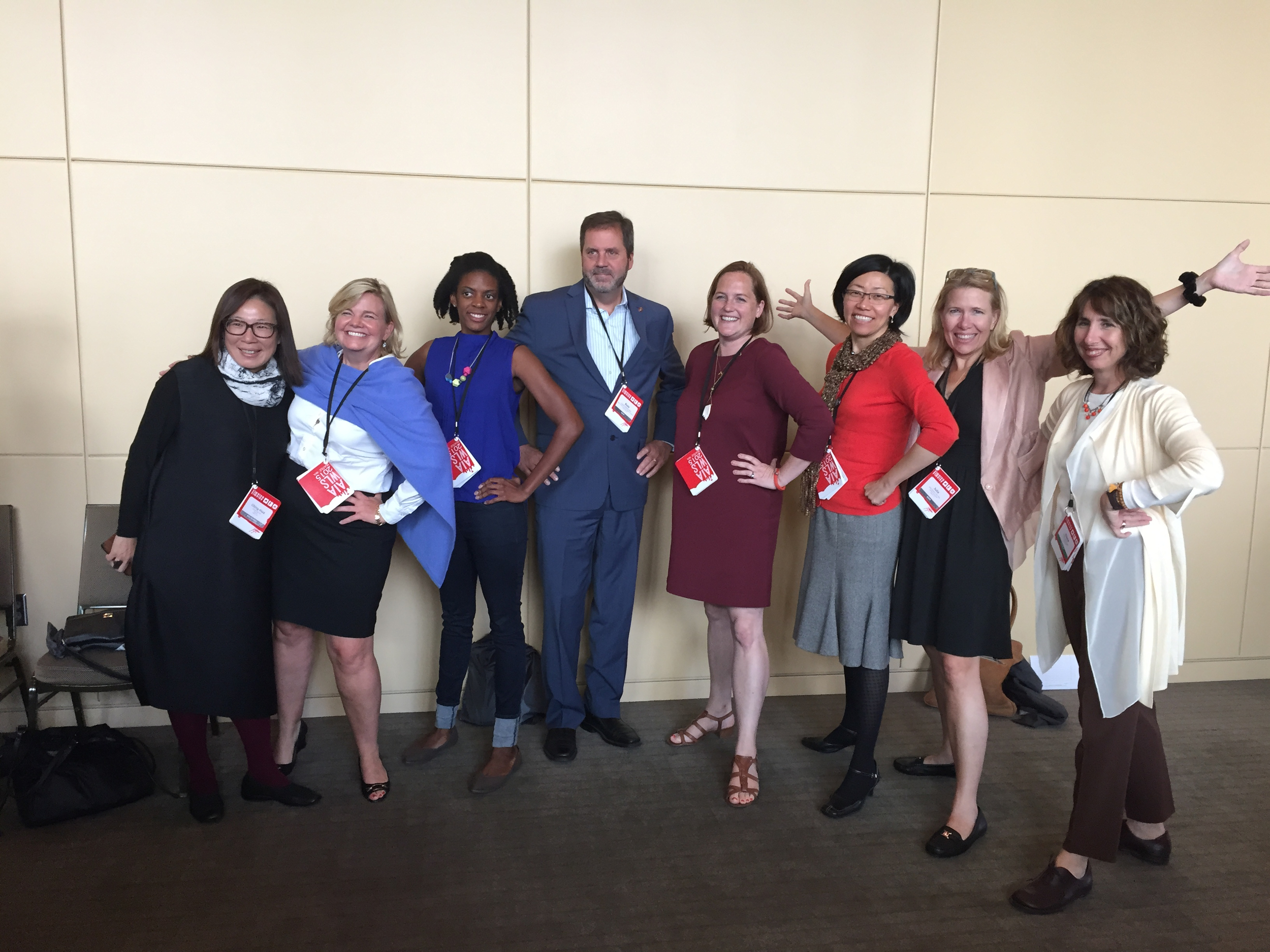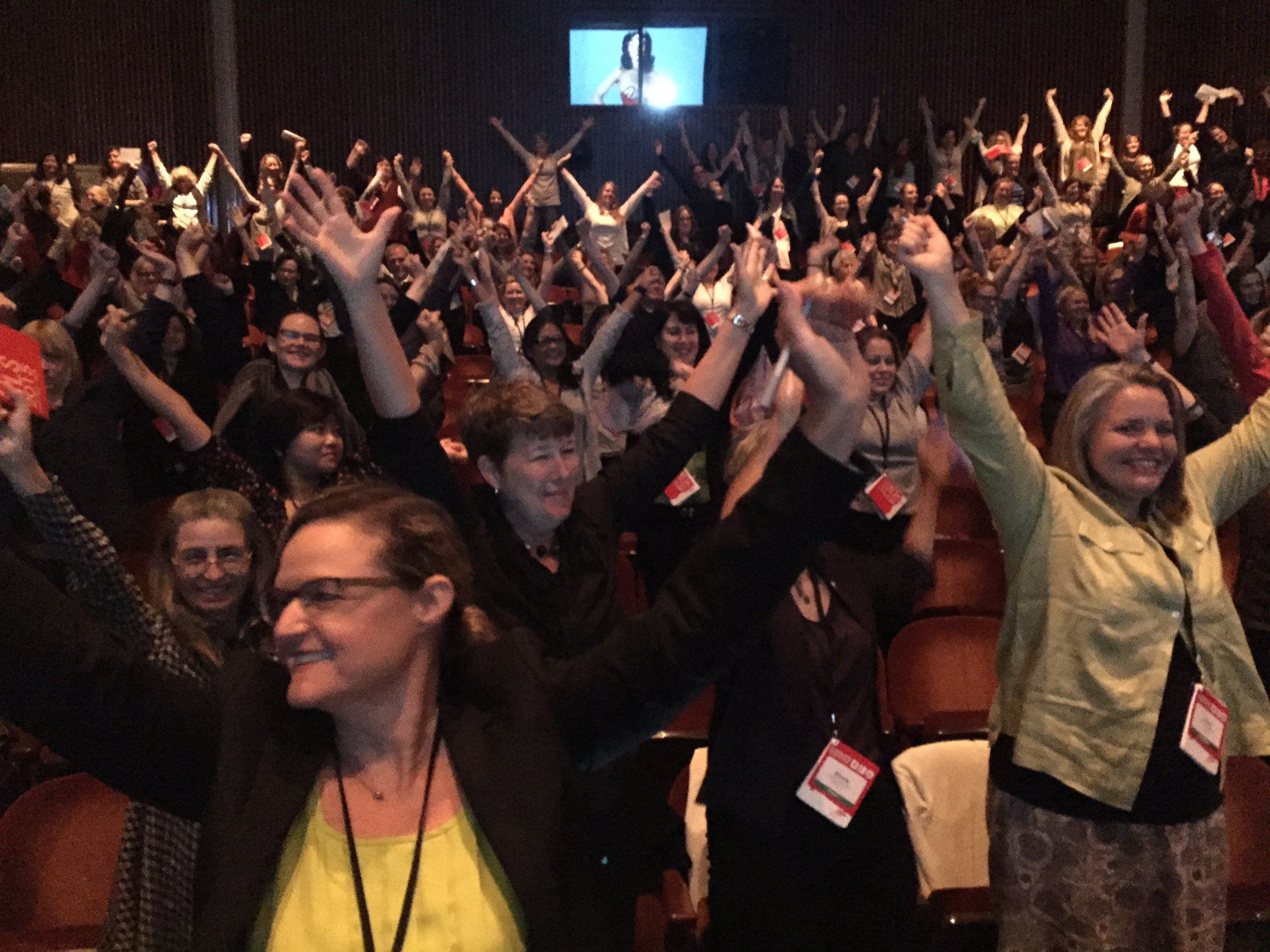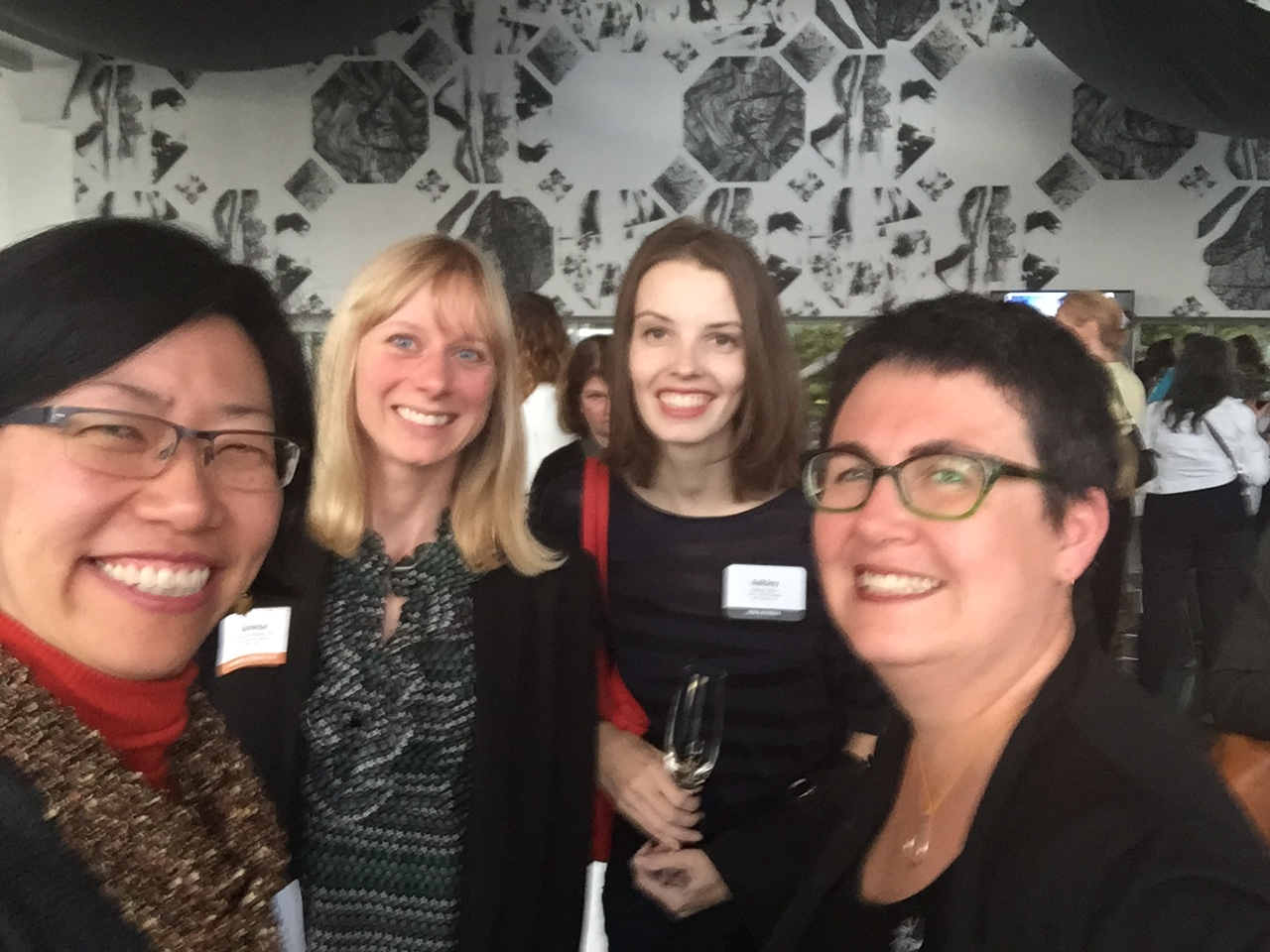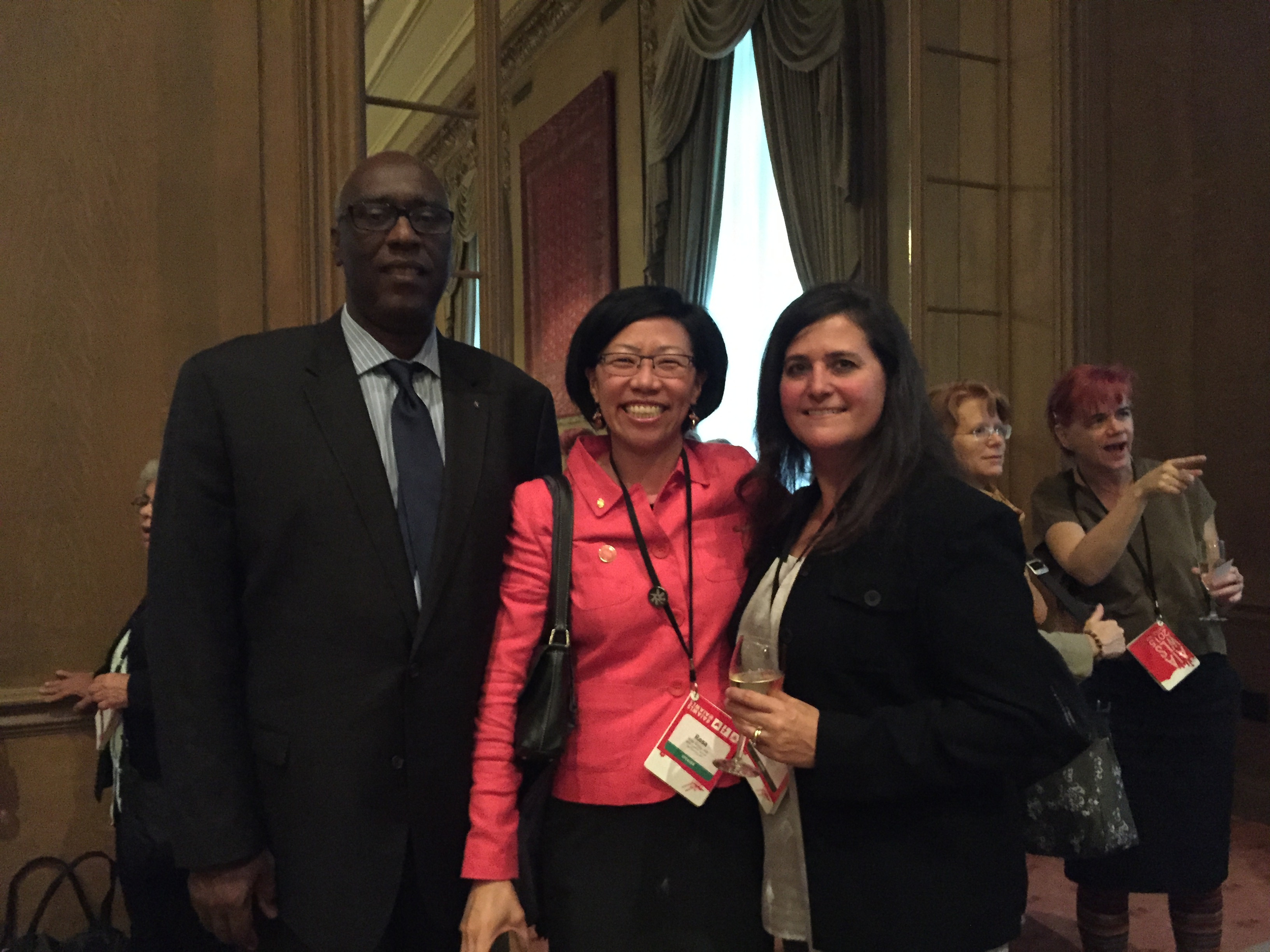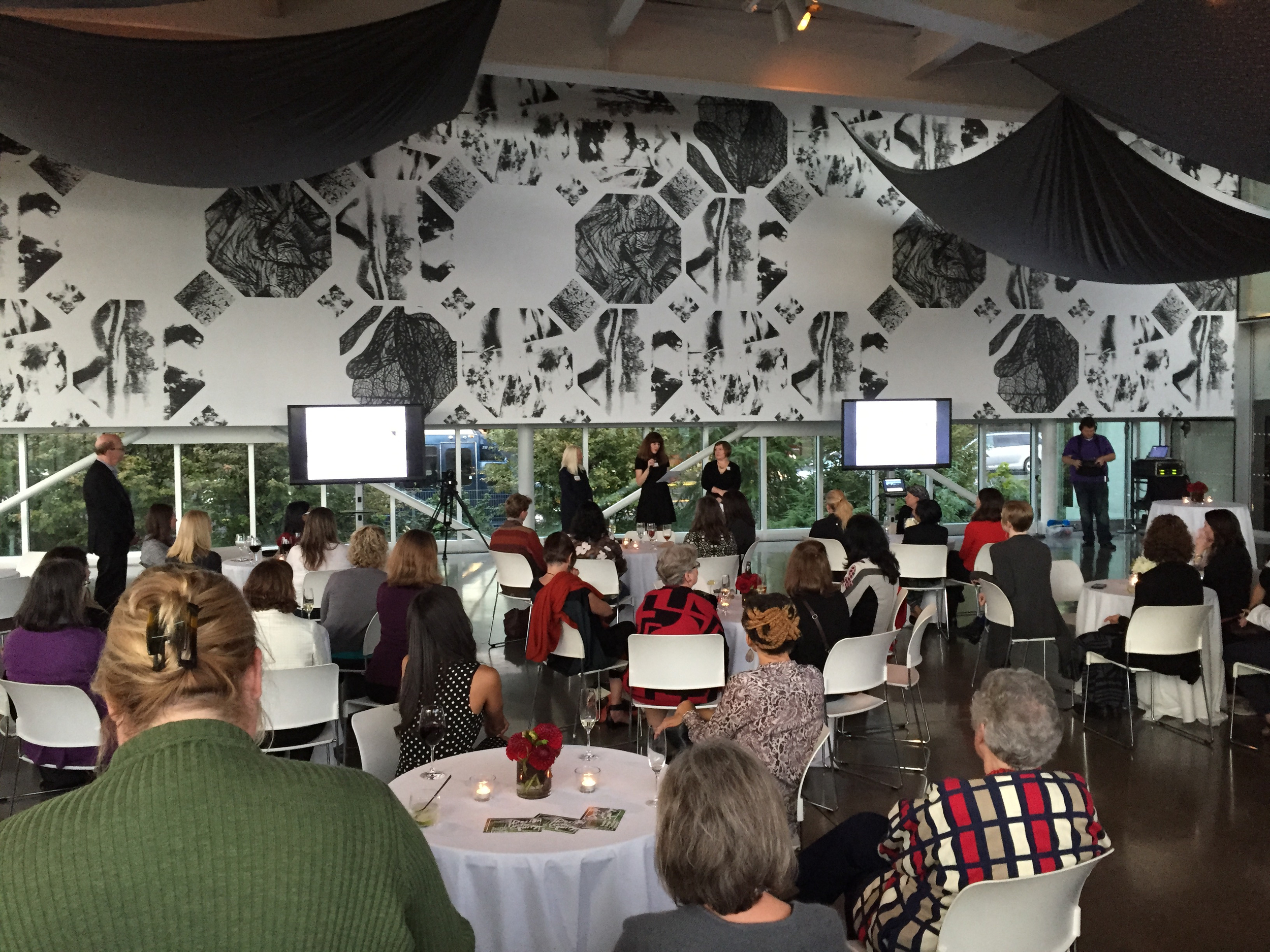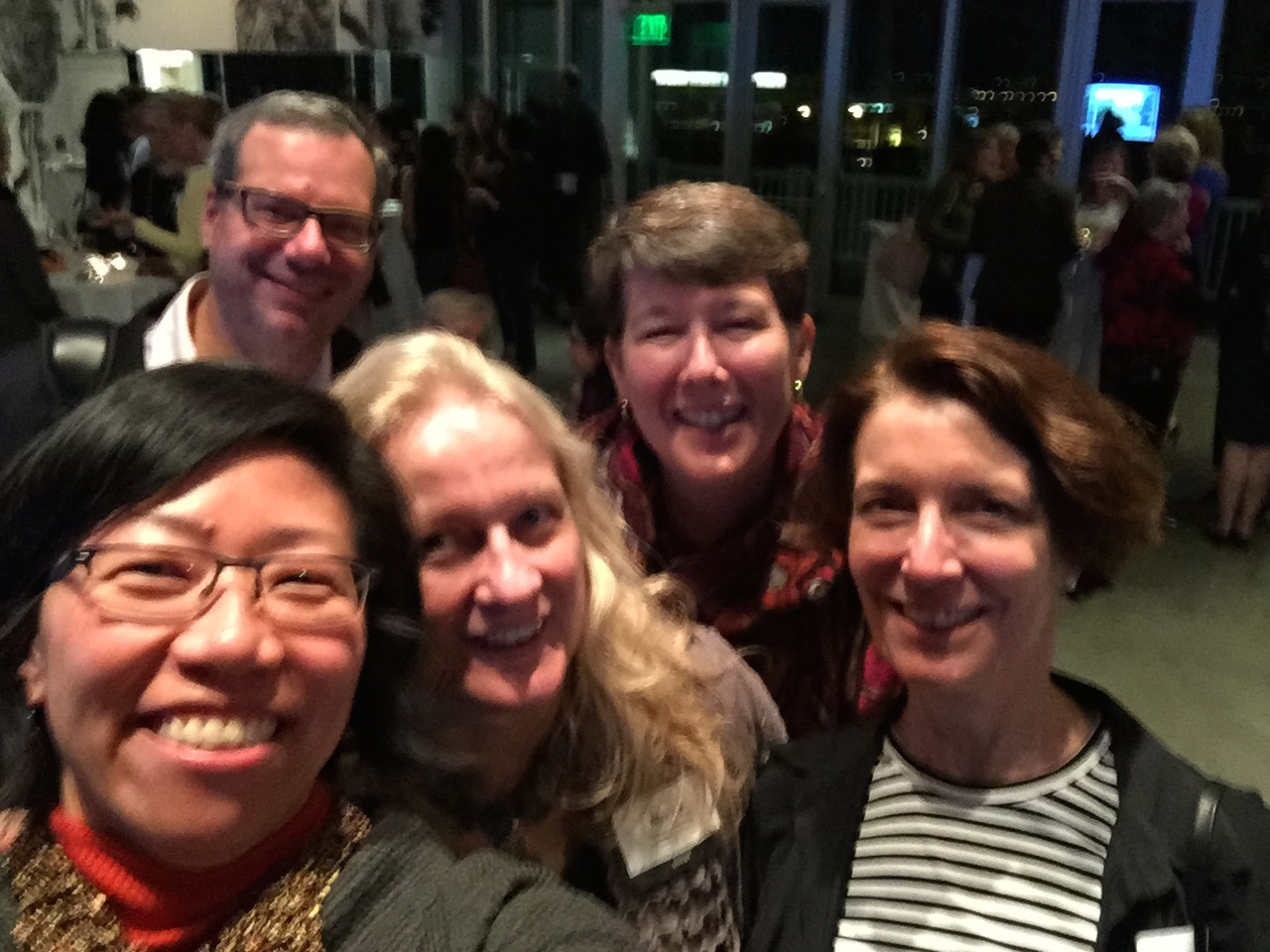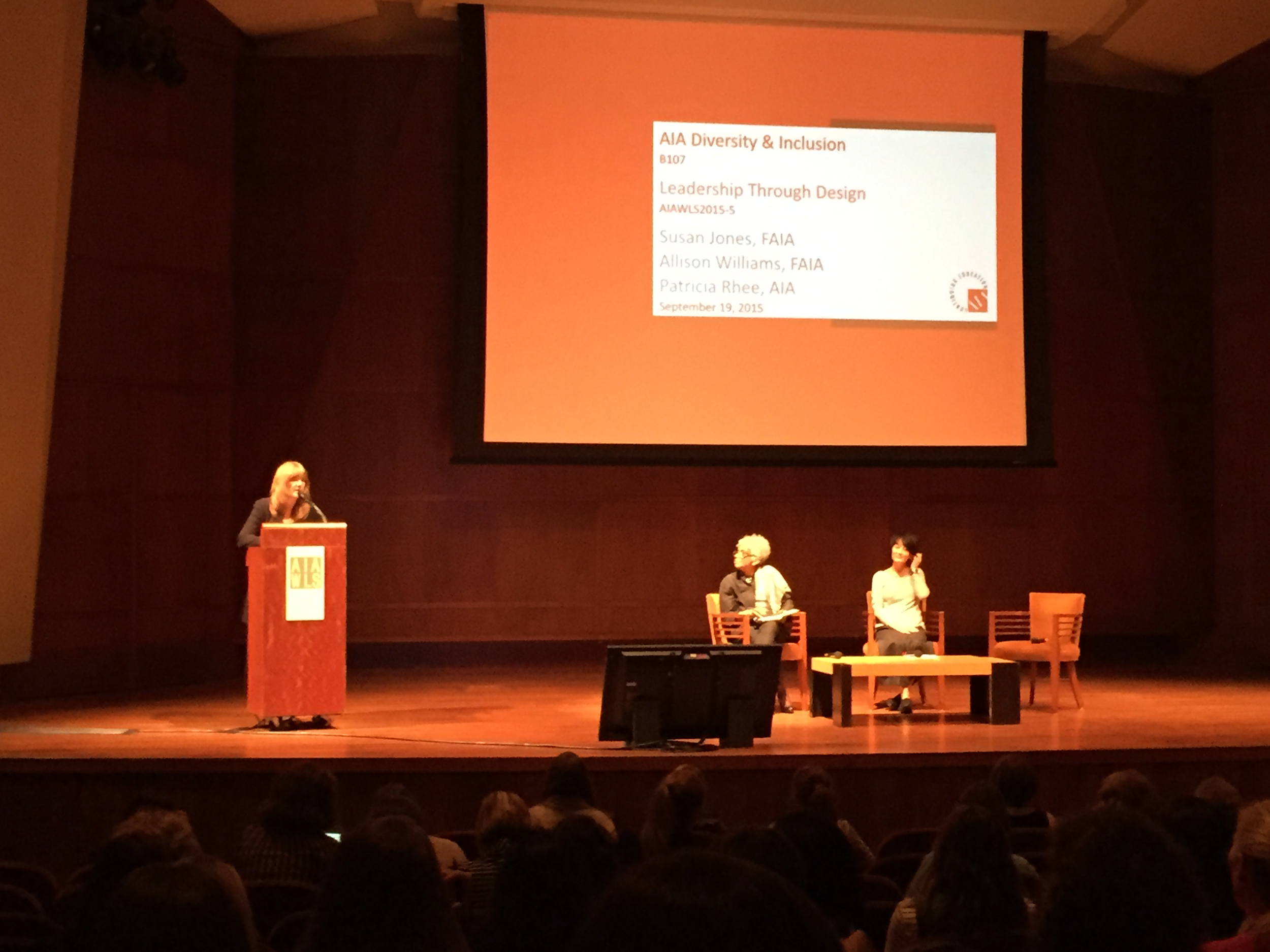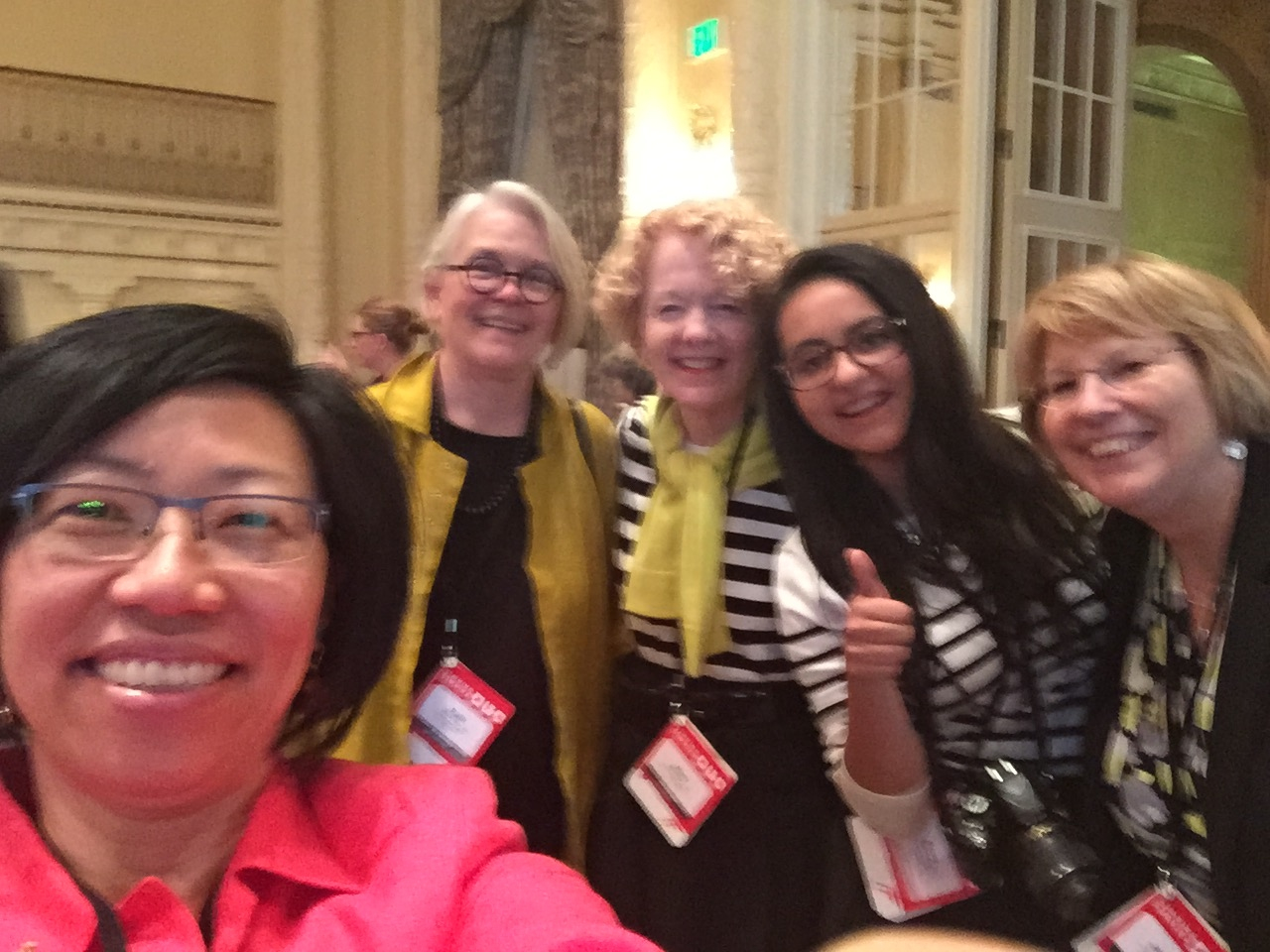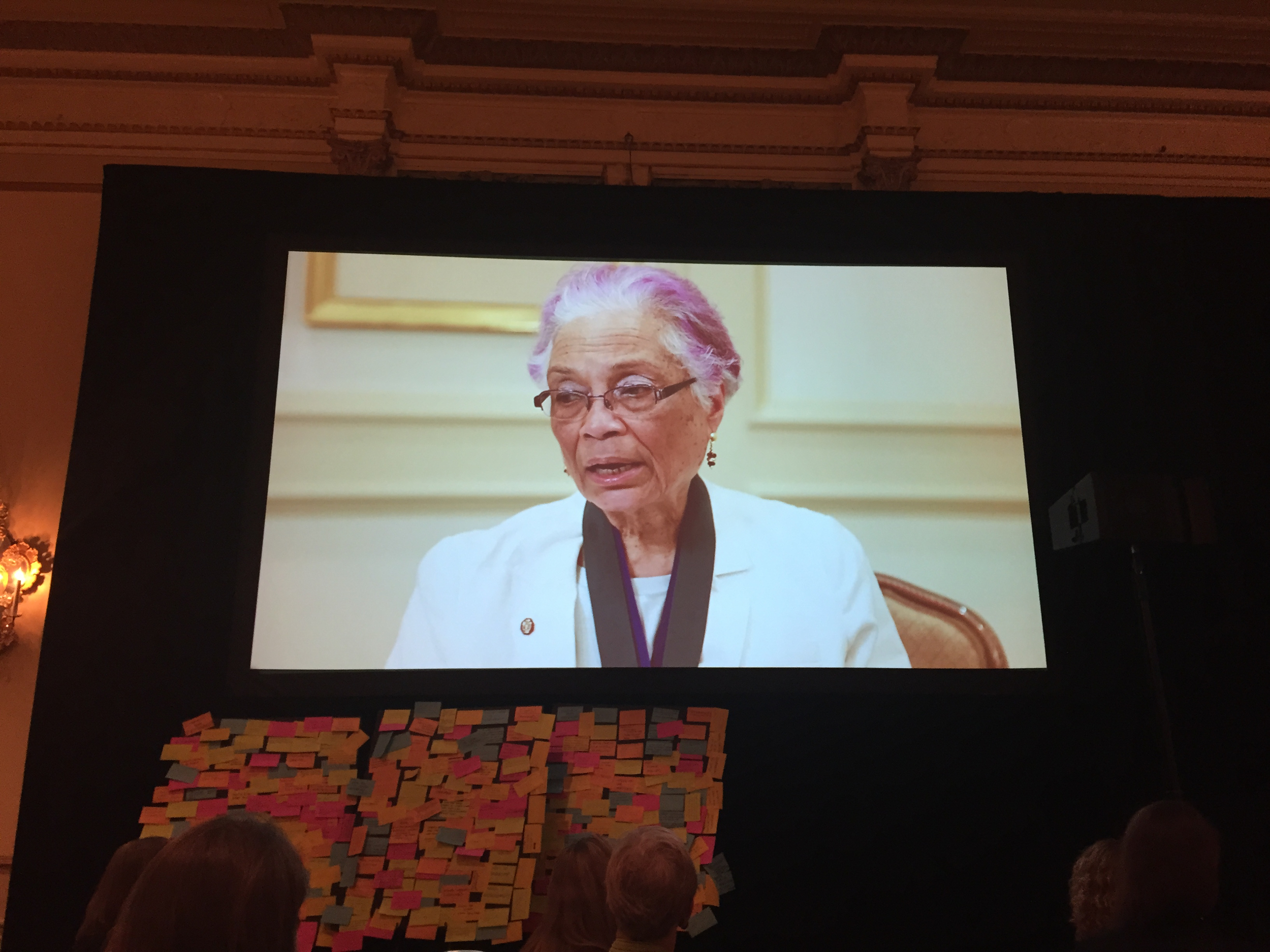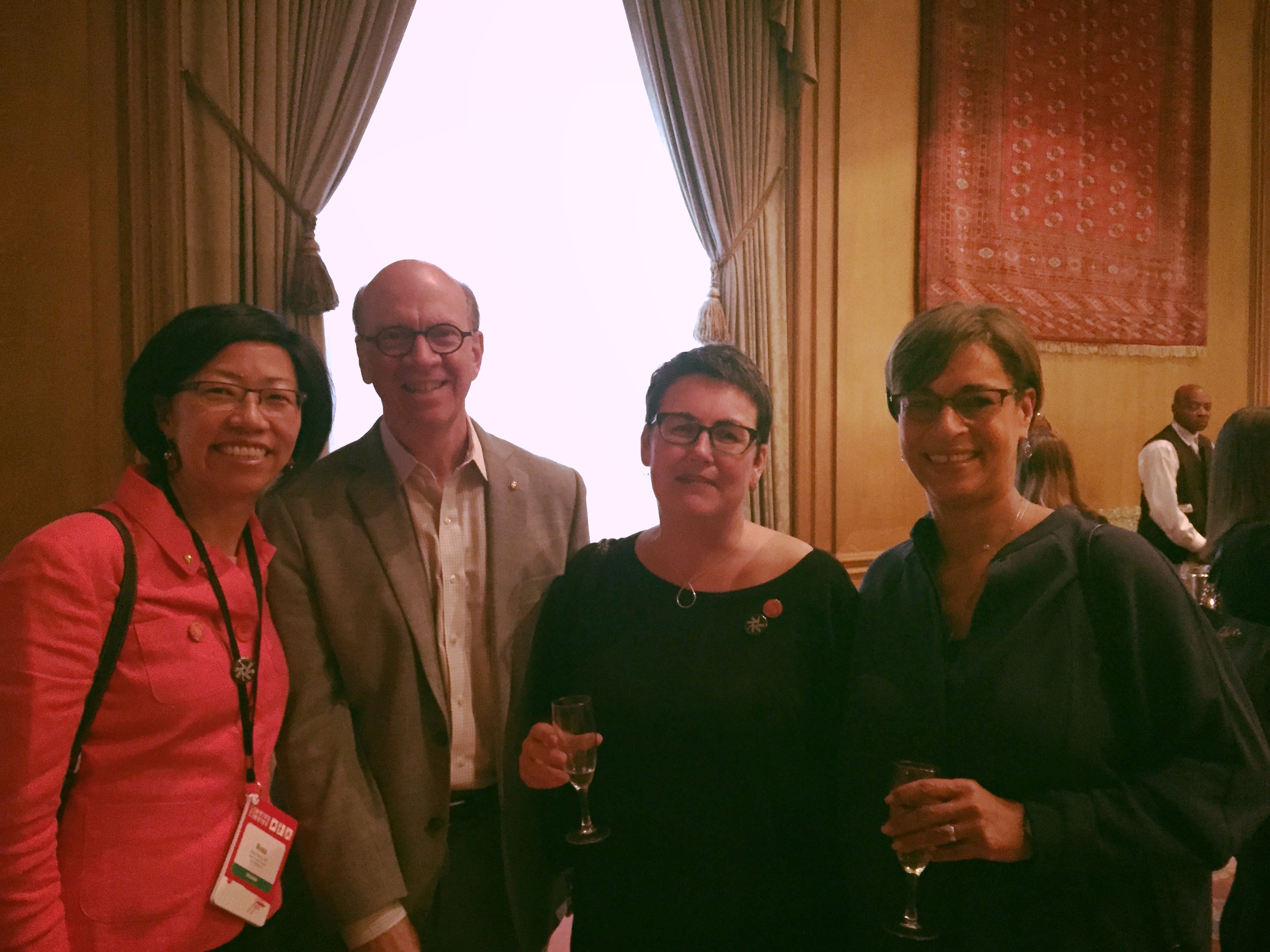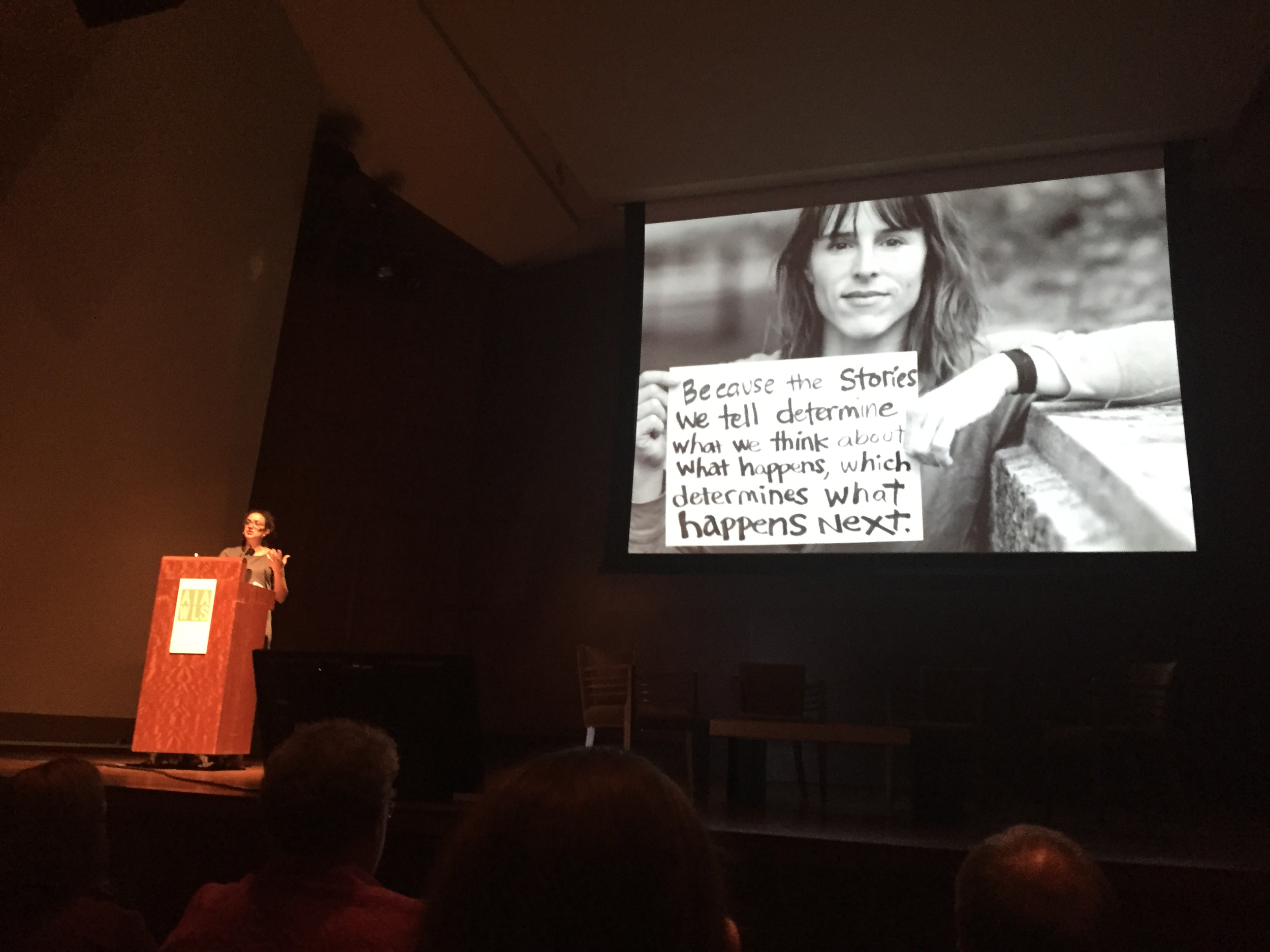(Reflections on Studio and the 2016 Equity by Design Hackathon at AIA Convention)
by Lilian Asperin Clyman
Back then, we used to call it ED 11B. It was commonly referred to as one of the two foundational classes of Cal’s Environmental Design curriculum. Looking back, ED 11A taught us how to draw and ED 11B required us to learn how to communicate an authentic point of view. My professor was Udo Greinacher, and his class had three projects: the Garden, the Personal Space, and the Earthquake Fence. But it was what Udo shared that created in our studio the space to think, to be ourselves, to think fast and to trust in our intuition. Our studio was an environment for us to experiment – we were the hackers and our studio was the original Hackathon.
The projects got progressively reliant on our own ideas - shaped by that influential force he made sure we paid attention to. For the Garden project, it was the symbiotic nature between the natural and built. He had us go out, document, reflect and express meaning through drawing. For the Personal Space project, it was understanding intimacy. Each of us interviewed a subject and designed a space for them. I always had a little bit of a hard time understanding Udo’s German accent. So when I asked him what he was passionate about, I could have sworn I heard him say “his mistress”. But in my mind, that did not stand out too much as he was also the same person who during crits would encourage us “to know the rules so that you can break them”. I proceeded to do an entire project about sensuality, light, shadow, allure, and passion only to realize later that what he had said was that he loved “mysteries”.
Perhaps it was the third project when I felt the most vulnerable - leaning on self-reliance the most. For the Earthquake Fence project, Udo wanted us to focus on the ultimate influential force, the present. We had all just survived the Loma Prieta Earthquake of 1989. There was no precedent we could “google” and learn about. You had to dig in, gain understanding, build your confidence and get going – all on your own. There still is no such thing as an Earthquake Fence, but all of us designed one. We had no stated deliverables, other than to describing our process for arriving at the solution. Mine was a cardboard model with sawdust from the model shop floor, a triangular structure of welded brass tubes, and a slice of crimped aluminum metal used to “mark” the fault when dormant, and react to it dynamically when active. The fence was one way and then completely different when affected by the force of nature – experienced in many scales, from what you can touch to what you can see from the sky. In some ways, it was a three dimensional seismograph. By far, this is my favorite project of all time.
But it was his insistence on three things that made him the original hacker: relying on your intuition, having relentless commitment, and being relevant and responsive to the world we live in. He didn’t care what we designed as long as it was evident that those three hallmarks were guiding us. For two decades after studio, I had been somewhat astounded about the infrequency of this spirit in our profession, and the compromising outcomes that result when we all stop hacking and just follow. So during the recent AIA Convention in Philadelphia, the Equity by Design Hackathon became another modern environment for experimentation - this time exploring innovation in a team setting and focusing on how to create better experiences in our beloved profession of Architecture.
What are the parallels between Udo’s studio and the Equity by Design Hackathon experience? Here are a handful, which I hope we all pledge to adopt as habits in our everyday work:
- Change makers are magnets.
- Find each other. Many folks just “showed up” not knowing too much about what to expect but trusting they were at the right place to make something good.
- Engage with your authentic self.
- In a setting with limited time, we don’t have time to work out of our natural strengths. You are a better contributor when you come from the depths of your heart and mind. And we can all edit more effectively than we trust ourselves to.
- Ask better questions.
- Truly understand the “why”?And make it a habit to also ask “why not?”, “what if?”, and “who with?”. The more diverse your team is, the better.
- Practice inclusivity.
- Ironically, many teams are assembled based on availability and experience. Welcome others and when you do, give everyone the same amount of airtime.
- Just laugh.
We are certainly still buzzing from the second Equity by Design Hackathon at the AIA Convention in Philadelphia. In the coming days, we will share with you the reflections, proposals and take-aways from all the teams. Each embraced their vulnerability and let their point of view guide them as they collaborated on envisioning more authentic, day to day experiences as Architects and new ways to shape the future of the profession. Enjoy!
EQxD Hackathon 2016 Recap - Blog Series
(Catch up here if you missed these earlier posts)
Dear Udo, You were the original Hacker
Meet the 2016 Equity by Design Hackathon Winners - "F.I.M."
2016 EQxD Hackathon Recap: Team 2 - Where in the World...?
2016 EQxD Hackathon Recap Team 1: SWIPE RIGHT! w/ ArchMatch.com
Agora App: A Modern Day Forum For Architectural Practice
How can Architects demystify the built environment?
2016 EQxD Hackathon Jurors: Working with the "A" Team
Thanks to our EQxD Hackathon Sponsors!


